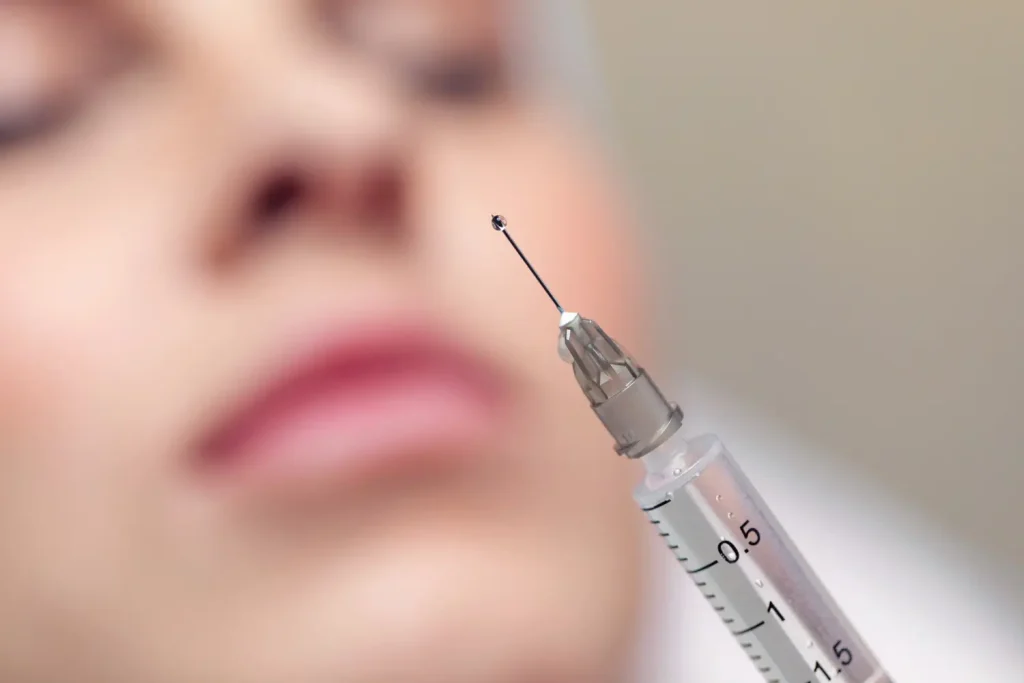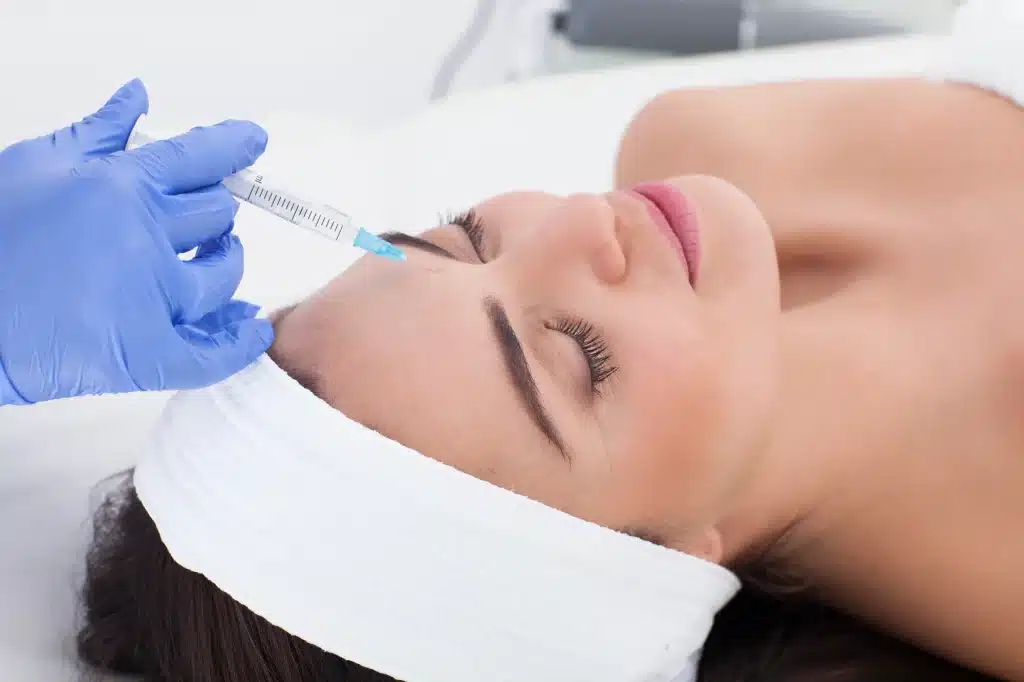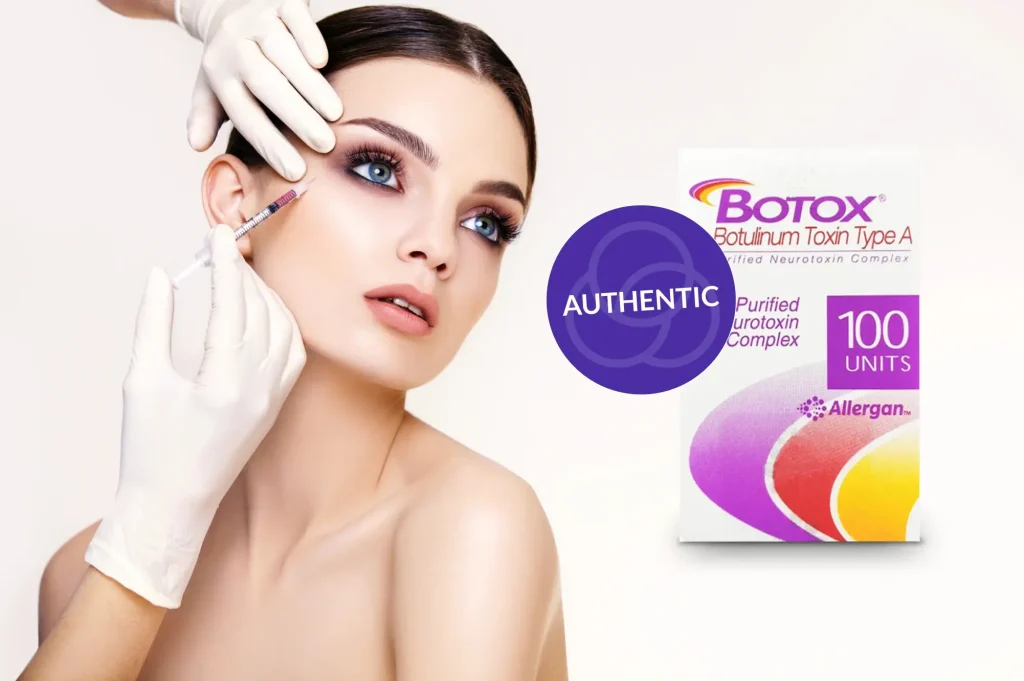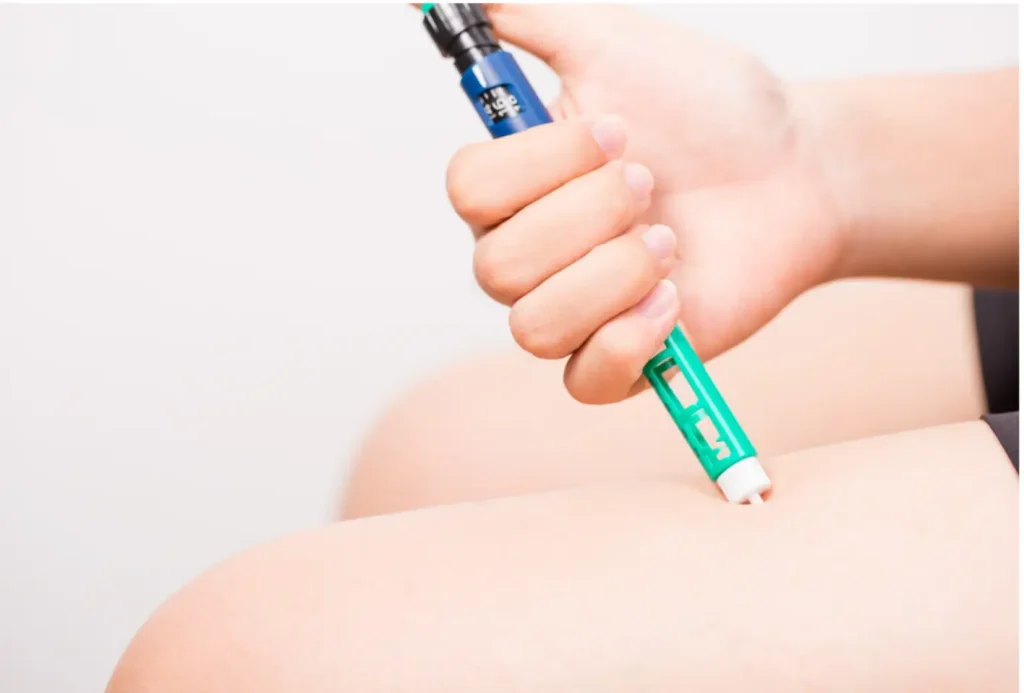A comparative study on botulinum toxin formulations in Asia highlighted a key difference: Korean products vary in the amount of inactive proteins they contain, which can impact both immunogenicity and clinical performance. As Korean aesthetic medicine continues to rise in global prominence, understanding these subtle formulation differences is crucial for both practitioners and patients.
Two of the most widely used Korean botulinum toxins are Innotox, a ready-to-use liquid, and Botulax, a lyophilized powder that requires reconstitution. Both are derived from botulinum toxin type A, but their formulation and handling diverge, leading to potential differences in clinical outcomes. Understanding these nuances can help in choosing the right treatment, based on specific aesthetic goals and patient needs.
In this article, we’ll delve into the key differences between Botulax and Innotox, focusing on their formulation, efficacy, diffusion, and safety profiles.
Key Takeaways
- Botulax is a freeze-dried powder that requires reconstitution, offering flexible dosing but needing precision and skill from the injector.
- Innotox is a ready-to-use liquid, eliminating the need for reconstitution and making it more convenient for quick treatments.
- Innotox contains only active neurotoxin and no inactive proteins, minimizing the risk of immunogenicity and making it suitable for frequent treatments.
- Botulax, with its inclusion of inactive proteins, may lead to antibody formation with repeated treatments.
- Botulax provides more localized diffusion, which is ideal for smaller, more precise areas of treatment.
- Innotox, with its liquid formulation, has broader diffusion, making it more suitable for larger treatment areas.
- Botulax is cost-effective and widely available, making it a more affordable option in many markets. In contrast, Innotox is more expensive but offers the convenience of room-temperature storage and animal-free ingredients.
- Both Botulax and Innotox are effective botulinum toxin type A products, but the choice between them depends on patient preferences, clinic needs, and budget considerations.
About: Medical Spa RX provides medical practices with premium products at the best prices. If you’re looking to buy Innotox for your practice, the sales representatives at Medical Spa RX can give you guidance.
Formulation & Reconstitution: Powdered Botulax vs Liquid Innotox
Botulax is a freeze-dried powder that requires reconstitution with sterile saline before injection. This allows for flexible dosing, but it also demands a high level of accuracy and skill from the injector. On the other hand, Innotox is a pre-mixed liquid botulinum toxin, developed by the Innotox toxin manufacturer, which eliminates the need for reconstitution. This innovation reduces preparation time, minimizes dilution errors, and enhances workflow efficiency.

Another key difference in formulation is the use of human serum albumin in Botulax, while Innotox contains methionine and polysorbate, making it free from animal-derived ingredients. These differences influence not only the workflow efficiency but also safety considerations and patient preferences in clinical practice.
Efficacy & Diffusion Comparison: Botulax vs Innotox Performance
Both Botulax and Innotox are highly effective botulinum toxin type A products, yet they exhibit distinct differences in their performance characteristics. Botulax delivers reliable wrinkle reduction with a gradual onset (3–5 days) and a treatment duration of 4–6 months. Its higher molecular weight and albumin content contribute to more localized diffusion, which makes it ideal for precise applications, especially in smaller, well-defined areas like the crow’s feet or glabellar lines.
Innotox, being a ready-to-use liquid, typically shows a faster onset (2–3 days) and has a similar longevity. Its liquid formulation allows for smoother, broader diffusion, which makes it a good choice for larger or blended treatment areas, such as the forehead or neck. Both products deliver consistent results, but the differences in diffusion behavior and onset speed can guide the product selection based on specific treatment goals.
Immunogenicity & Safety: Inactive Protein Levels in Botulax and Innotox
Immunogenicity is an important consideration in botulinum toxin treatments. It refers to the potential for the body to develop resistance to the product due to the inactive protein content. Higher levels of these proteins can lead to the formation of antibodies, which might make subsequent treatments less effective over time.

- Innotox: Contains only the active neurotoxin and is free from complexing proteins, which minimizes immunogenic risk and makes it particularly suitable for long-term or frequent treatments.
- Botulax: Includes inactive proteins and complexing agents, which may increase the likelihood of antibody formation with repeated or closely spaced treatments.
Both Innotox and Botulax are considered safe and well-tolerated when used according to clinical guidelines. However, patients who receive frequent or high-dose treatments may prefer Innotox to reduce the risk of developing resistance and ensure sustained treatment efficacy.
Storage, Cost & Market Reach of Botulax vs Innotox
When it comes to handling and accessibility, Botulax and Innotox differ significantly. Botulax requires refrigeration (2–8°C) and reconstitution before use, which may be less convenient in busy or mobile clinical settings. On the other hand, Innotox comes as a pre-mixed liquid that can be stored at room temperature (15–25°C), making it more convenient for practices with high patient turnover or those that require mobile treatments.
In terms of cost and market reach, Botulax is generally more affordable and widely available. Its cost-effectiveness makes it an attractive option for many clinics, especially in regions where price sensitivity is high.
However, Innotox is priced higher due to its advanced liquid formulation, room-temperature storage, and animal-free ingredients, but it has a more limited global reach. Despite this, the growing popularity of Innotox in certain markets highlights its premium positioning and convenience.
Conclusion
Both Botulax and Innotox are highly effective Korean botulinum toxin products used in a variety of aesthetic treatments. Innotox stands out for its ready-to-use convenience, room-temperature storage, and lower immunogenicity, making it ideal for patients who require frequent treatments. Botulax, on the other hand, is more cost-effective and widely available, though it requires reconstitution and refrigeration.
The choice between the two often depends on clinical preferences, the patient’s needs, and the budget available. Many providers choose to offer both options to accommodate varied treatment scenarios, ensuring flexibility and personalized care for different patients.
FAQs
1. Is Innotox FDA-approved in the United States?
No, Innotox is not currently FDA-approved in the U.S., but it is widely used in other countries under local regulations.
2. How long do Innotox results typically last?
Results usually last 3 to 4 months, similar to other botulinum toxins, depending on the treatment area and individual metabolism.
3. Is Innotox vegan or animal-free?
Yes, Innotox is free from animal-derived ingredients, making it a popular choice for ethically conscious consumers.
4. Can Innotox be stored without refrigeration?
Yes, one of Innotox’s key advantages is room temperature storage, which simplifies handling and transportation.
5. Does Innotox require dilution before injection?
No, Innotox is pre-mixed and ready to use, eliminating the reconstitution step.
6. Is Innotox suitable for patients with allergies to human albumin?
Yes, since Innotox does not contain human serum albumin, it may be a safer alternative for sensitive patients.
7. How does Innotox compare in cost to other botulinum toxins?
Innotox is generally more expensive than Botulax but may save time and reduce reconstitution-related waste.
References
Frevert J, Ahn KY, Park MY, Sunga O. Comparison of botulinum neurotoxin type A formulations in Asia. Clin Cosmet Investig Dermatol. 2018;11:327-331. Published 2018 Jul 5. doi:10.2147/CCID.S160723
Cha W, Jang JY, Wang SG, Kang JH, Jo MG. Liquid-type botulinum toxin Type A in adductor spasmodic dysphonia: A Prospective pilot study. Journal of Voice. 2016;31(3):378.e19-378.e24. doi:10.1016/j.jvoice.2016.07.004
Hee K DO, Chun MH, Paik NJ, et al. Safety and efficacy of letibotulinumtoxinA(BOTULAX®) in treatment of post stroke upper limb spasticity: a randomized, double blind, multi-center, phase III clinical trial. Clinical Rehabilitation. 2017;31(9):1179-1188. doi:10.1177/0269215516689331





















